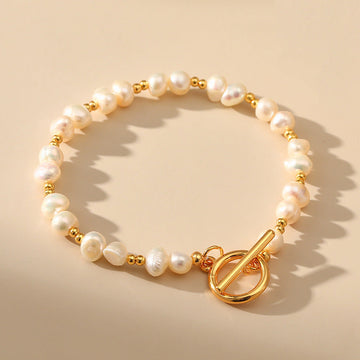When cleaning stone bracelets, the following points should be noted for different special materials:
Lapis lazuli
Avoid washing with water: Lapis lazuli is composed of various minerals and has tiny gaps inside. Washing it with water can easily allow stains to seep in. If there are stains on the surface, gently wipe them with a damp towel that has been wrung out of the water.
Prevent bumps and knocks: Lapis lazuli has a relatively low hardness. When not wearing it, it should be placed in a cloth bag as much as possible to prevent scratches.
Stay away from strong light and extreme temperatures: Avoid prolonged exposure to sunlight, otherwise its beautiful color may fade and its luster may be affected. Meanwhile, the temperature should not be too high or too low; otherwise, lapis lazuli may be damaged.
Avoid contact with irritating liquids: Lapis lazuli is not resistant to acids and alkalis and is prone to corrosion. The copper in it is also prone to oxidation and blackening. Therefore, it is necessary to avoid contact with irritating liquids such as sweat as much as possible.
Quartz jade
Avoid chemical cleaners: When cleaning, use warm water and a small amount of neutral detergent. Do not use chemical cleaners.
Prevent collision: Although quartz jade bracelets are relatively hard, it is still necessary to avoid collisions with hard objects to prevent damage to the bracelet.
Avoid high temperatures and direct sunlight: Quartz jade bracelets are not heat-resistant. Prolonged exposure to high-temperature environments may cause changes in the jade quality, affecting its appearance and efficacy. At the same time, prolonged direct exposure to sunlight will cause changes in the mineral composition inside the bracelet, affecting its color and texture.
Tsavorite
Stay away from chemicals: Chemicals such as perfumes, cosmetics and detergents in daily life may pose a potential threat to tafferite and affect its brilliant luster. So, when doing housework or putting on makeup, be sure to take off your tsavoray jewelry.
Avoid collisions: Although tsavorite is quite hard, it is still necessary to be careful to avoid colliding with harder gemstones or objects to prevent scratches or fractures.
Prevent high temperatures: Tsavorite should not be exposed to high-temperature environments for long periods of time, such as direct sunlight or proximity to heat sources. High temperatures may cause damage to its internal structure, affecting the gemstone's lasting beauty.
Porous gemstones such as turquoise and lapis lazuli
Avoid liquid cleaners: This type of gemstone is prone to absorbing moisture and stains. Do not use liquid cleaners when cleaning.
The correct way to remove stains: You can place the gemstone in dry coarse salt and use the adsorption effect of the coarse salt to remove the stains. However, it should be noted that the operation time should not be too long to avoid damaging the gemstone.
Hetian jade
Avoid acidic or alkaline cleaners: Hetian jade is a mineral with relatively low hardness. Acidic or alkaline cleaners can damage its surface and thereby deteriorate the quality of the jade.
Prevent exposure to direct sunlight and extreme temperatures: Avoid exposing Hetian jade bracelets to the sun for long periods of time to prevent color changes or thermal expansion and contraction. At the same time, it is necessary to prevent it from cracking due to excessively high or low temperatures. Water that is too hot can also cause the bracelet to lose its luster.
Avoid scratches from metal tools: Metal tools are relatively hard and can easily scratch the surface of Hetian jade bracelets. When cleaning, use soft tools such as soft-bristled brushes.







